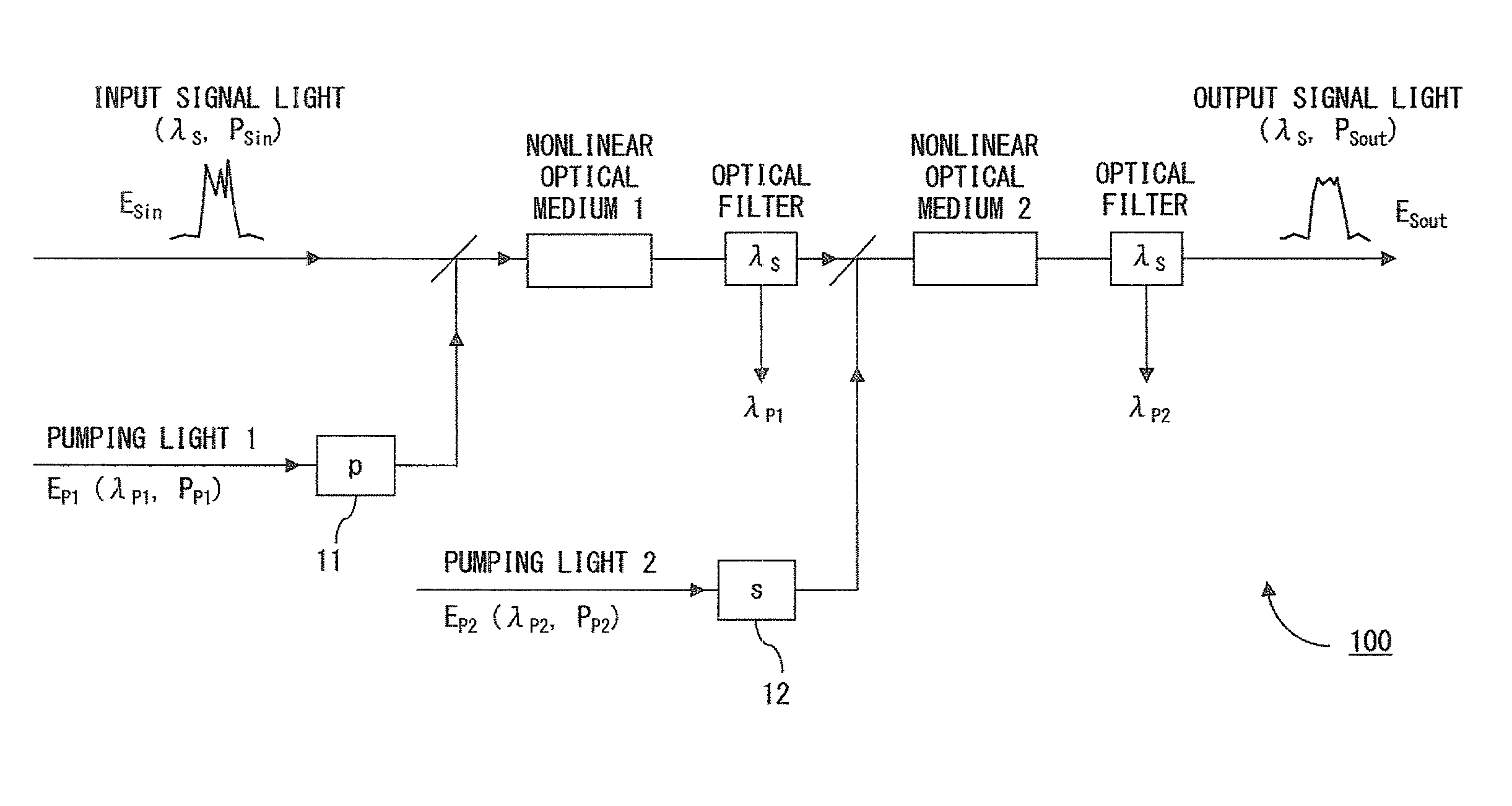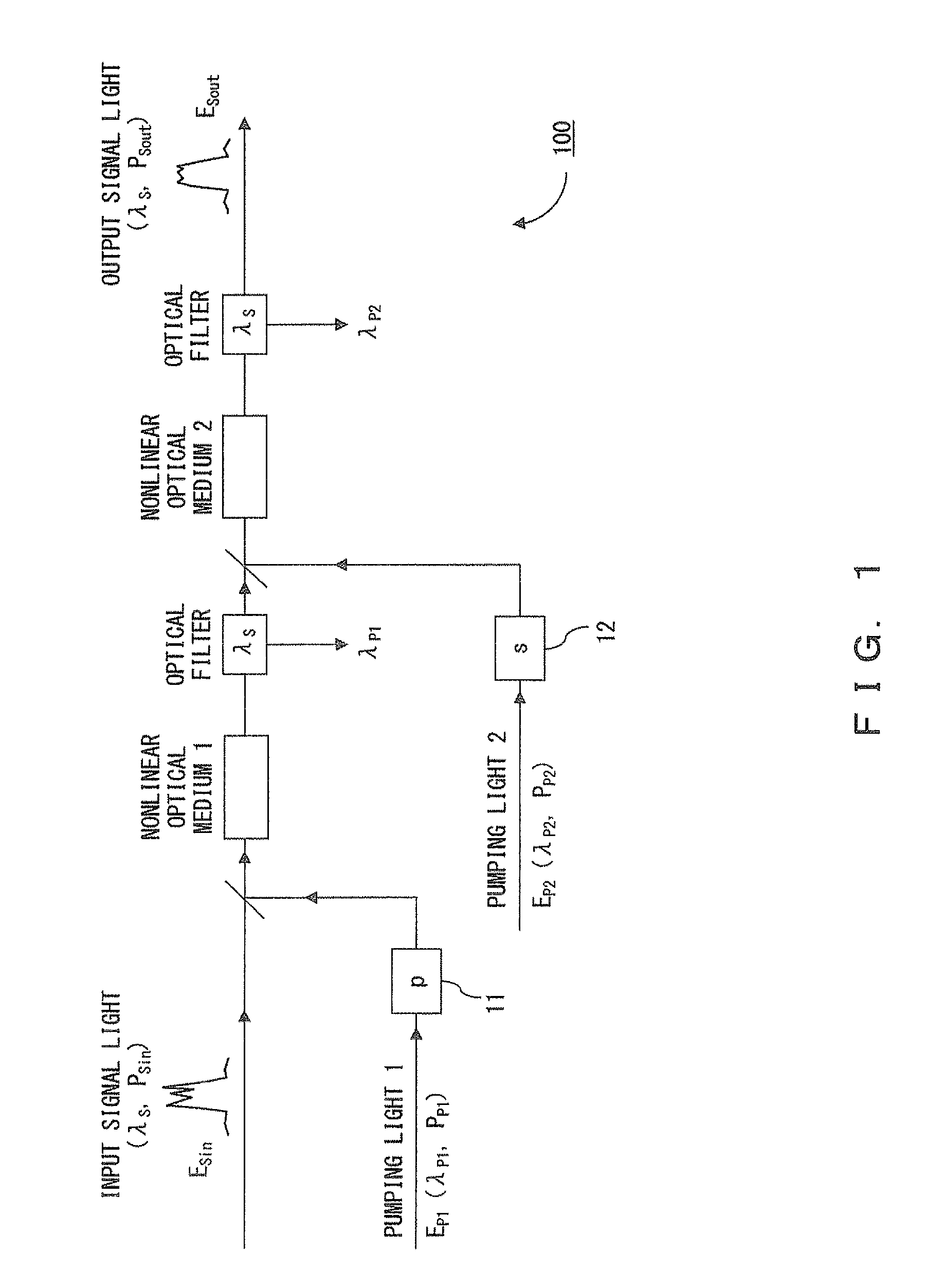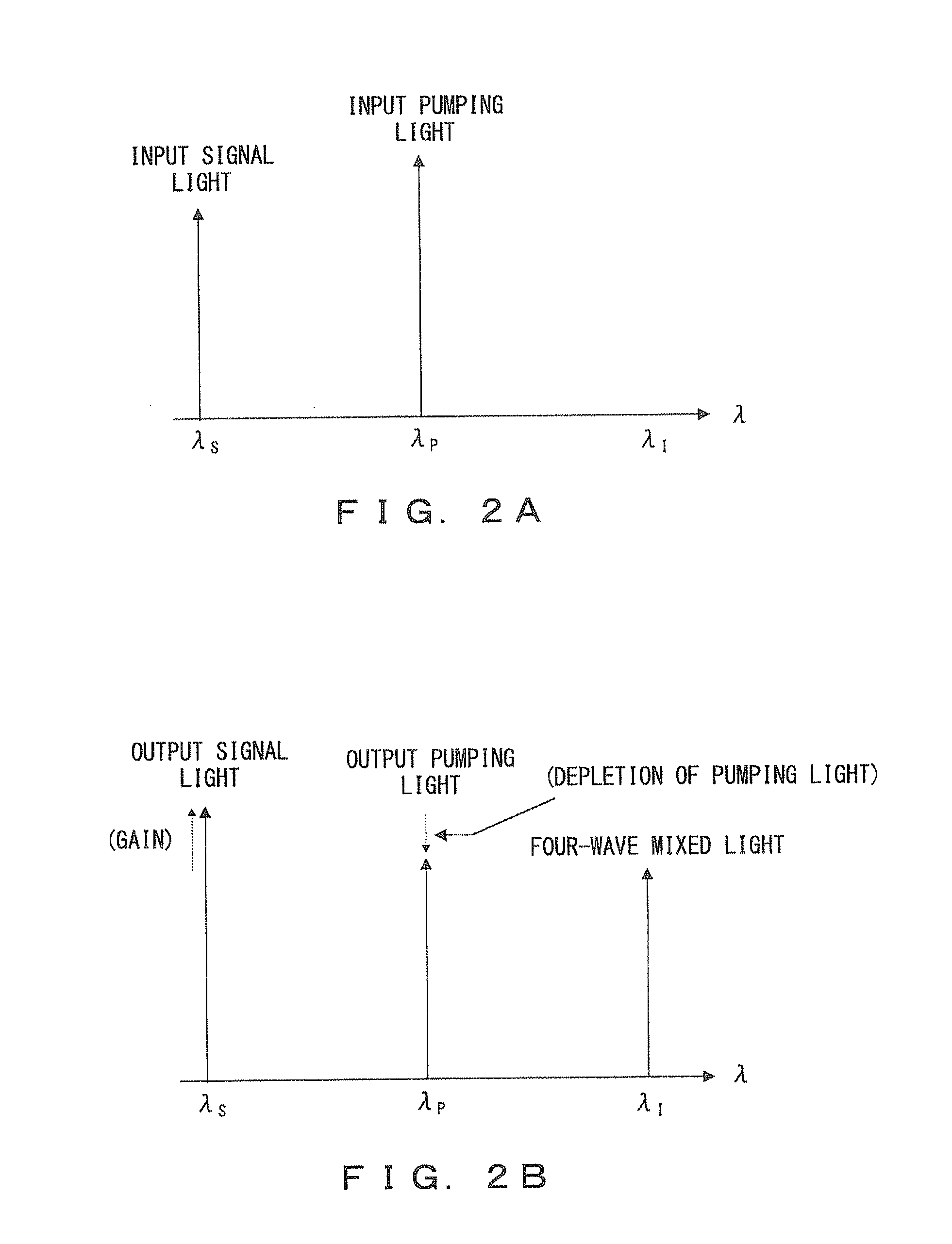Optical signal processing device
a technology of optical signal and processing device, which is applied in the direction of optical elements, electromagnetic repeaters, instruments, etc., can solve the problems of limited practical transmission distance, serious deformation of optical s/n ratio, and waveform distortion
- Summary
- Abstract
- Description
- Claims
- Application Information
AI Technical Summary
Benefits of technology
Problems solved by technology
Method used
Image
Examples
first embodiment
[0056]FIG. 3 illustrates a configuration of an optical signal processing device according to a first embodiment. The basic configuration of the optical signal processing device according to the first embodiment is the same as the optical signal processing device illustrated in FIG. 1. However, optical fibers 21 and 22 are respectively used as the nonlinear optical media 1 and 2 in the first embodiment.
[0057]The input powers of the signal light (ES), the pumping light (EP1) and the pumping light (EP2) are respectively controlled by power controllers. The power controllers are respectively implemented, for example, with an optical amplifier or an optical attenuator. Alternatively, the power controllers may be implemented by combining an optical amplifier and an optical attenuator. At this time, the powers of the pumping lights 1 and 2 are controlled, for example, to generate mutually identical or almost identical optical parametric gains in the optical fibers 21 and 22. Moreover, the ...
second embodiment
[0078]To generate sufficient gain saturation for every polarization state of signal light, pumping light in a polarization state of another direction may be used in addition to the above described one pair of mutually orthogonal pumping lights. Here, a configuration further using another pair of pumping lights EP3 and EP4, the polarization direction of which is 45 degrees from the pumping lights EP1 and EP2, is described.
[0079]FIG. 7 illustrates a configuration of an optical signal processing device according to the second embodiment. The optical signal processing device according to the second embodiment includes cascade-connected optical fibers 21 to 24. All of the optical fibers 21 to 24 are nonlinear optical fibers, and have the same characteristic in this embodiment.
[0080]To the optical fibers 21, 22, 23 and 24, pumping light 1 (EP1), pumping light 2 (EP2), pumping light 3 (EP3) and pumping light 4 (EP4), which are generated by pumping light sources not illustrated in FIG. 7, a...
third embodiment
[0085]In the first and the second embodiments, the power of the signal light must be increased to a certain extent in order to implement the optical limiter function. Specifically, the input power PSin of the signal light must be higher than the threshold power P1 in FIGS. 4A and 4B. However, it is not always possible to make the input power of the signal light higher than the threshold power P1. Especially, the power of each optical signal is low in a WDM system where a plurality of optical signals are carried.
[0086]FIG. 9 illustrates a configuration of an optical signal processing device according to the third embodiment. In this optical signal processing device, control light ECont is provided to the optical fibers 21 and 22. The wavelength λCont of the control light is different from the wavelength λS of the signal light, and the wavelengths λP1 and λP2 of the pumping lights. In FIG. 9, the control light is provided only to the optical fiber 21. Actually, however, another contro...
PUM
| Property | Measurement | Unit |
|---|---|---|
| wavelengths | aaaaa | aaaaa |
| output power | aaaaa | aaaaa |
| power | aaaaa | aaaaa |
Abstract
Description
Claims
Application Information
 Login to View More
Login to View More - R&D
- Intellectual Property
- Life Sciences
- Materials
- Tech Scout
- Unparalleled Data Quality
- Higher Quality Content
- 60% Fewer Hallucinations
Browse by: Latest US Patents, China's latest patents, Technical Efficacy Thesaurus, Application Domain, Technology Topic, Popular Technical Reports.
© 2025 PatSnap. All rights reserved.Legal|Privacy policy|Modern Slavery Act Transparency Statement|Sitemap|About US| Contact US: help@patsnap.com



